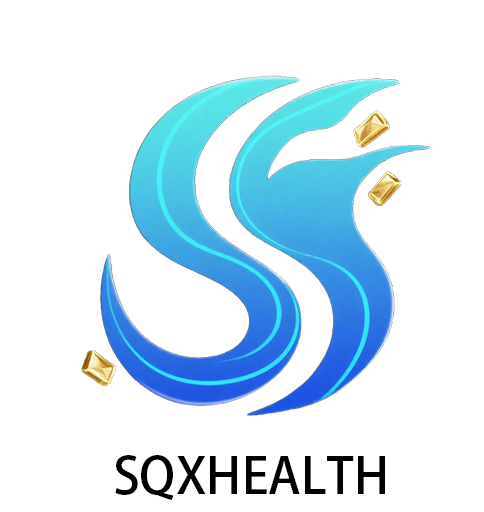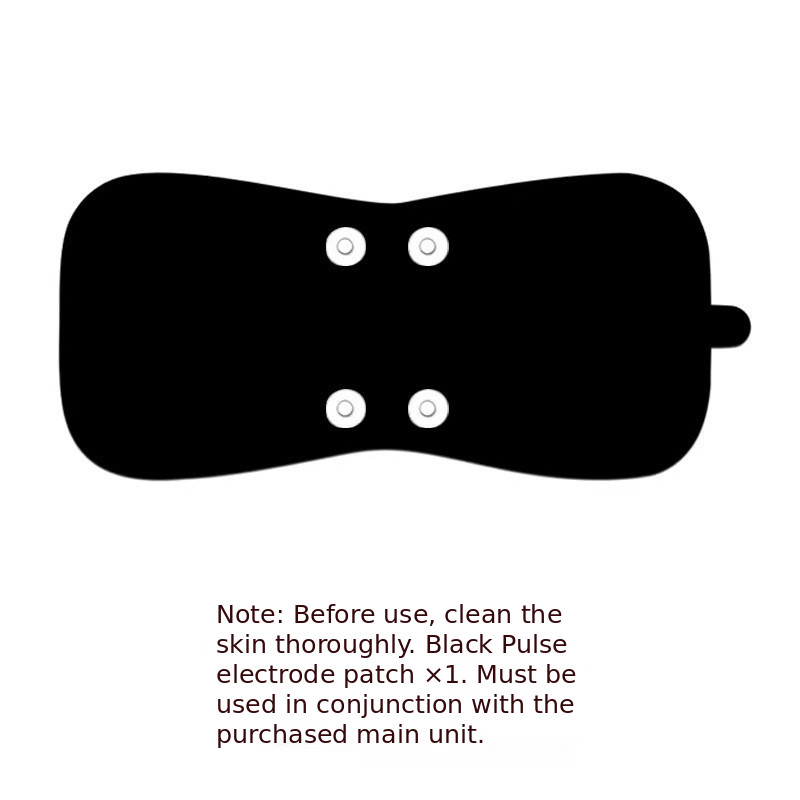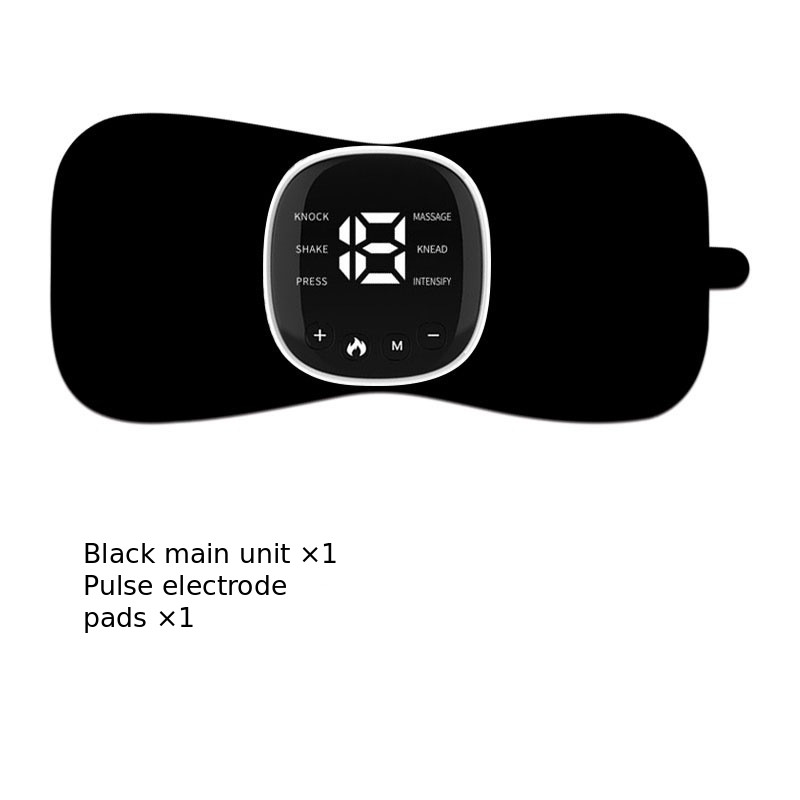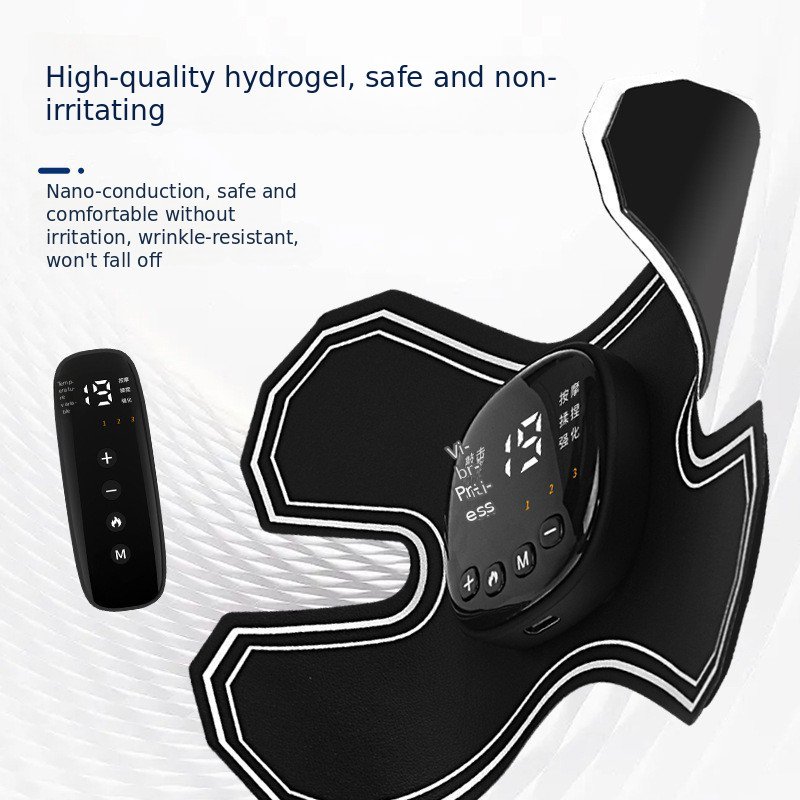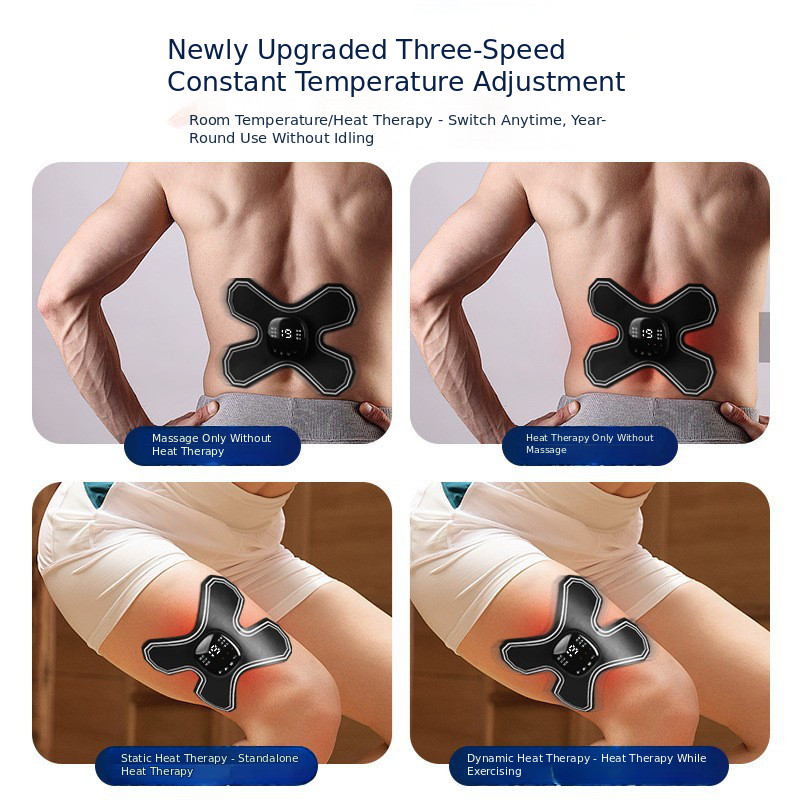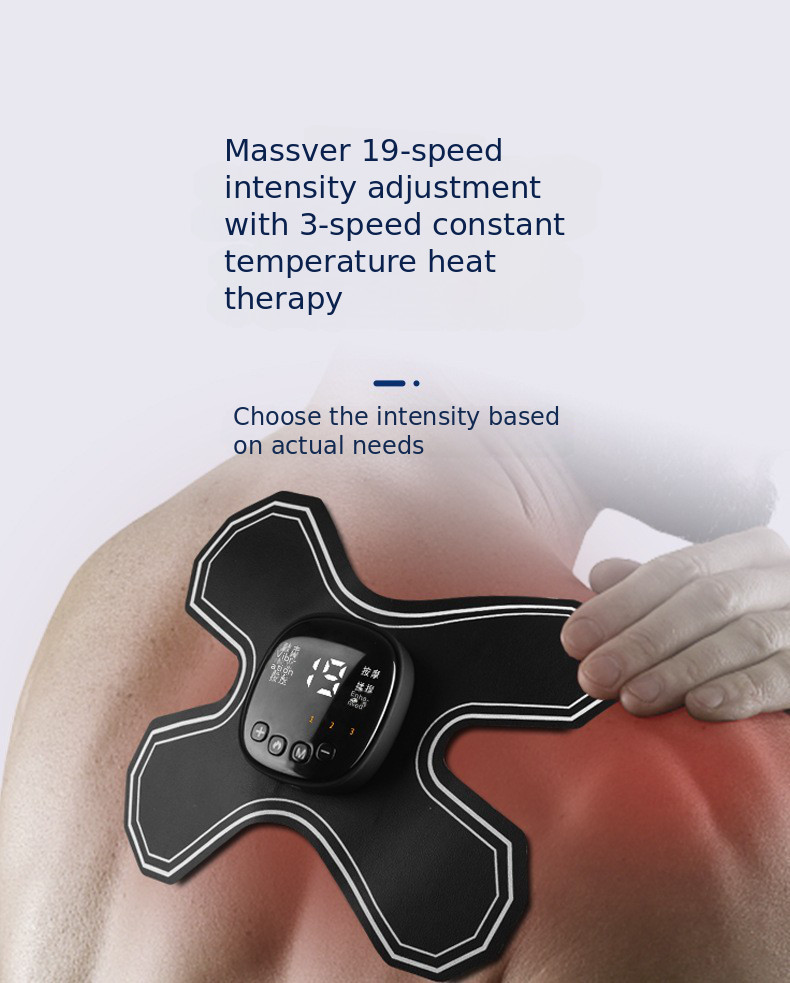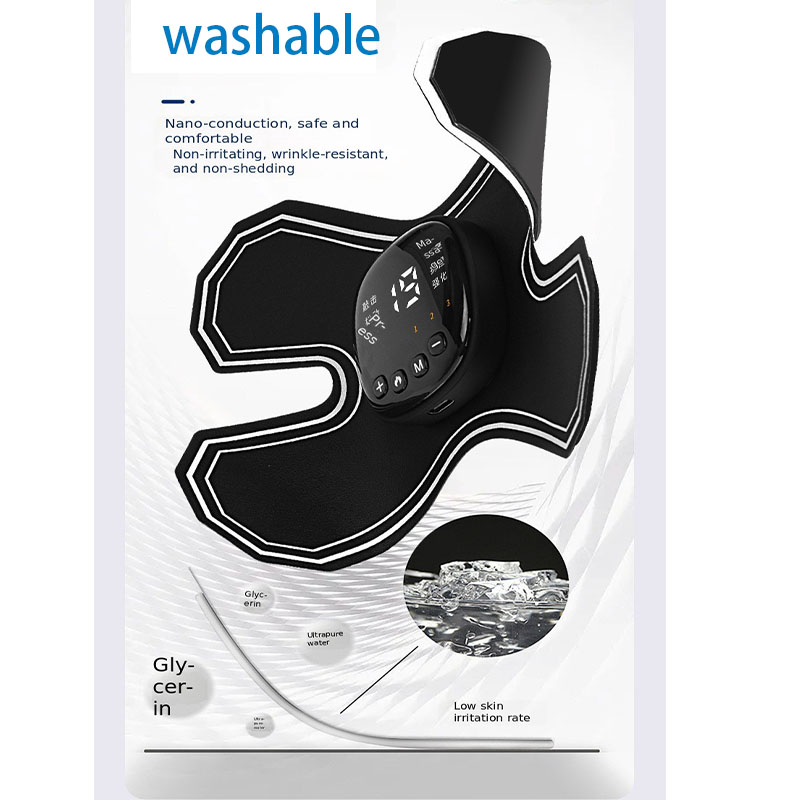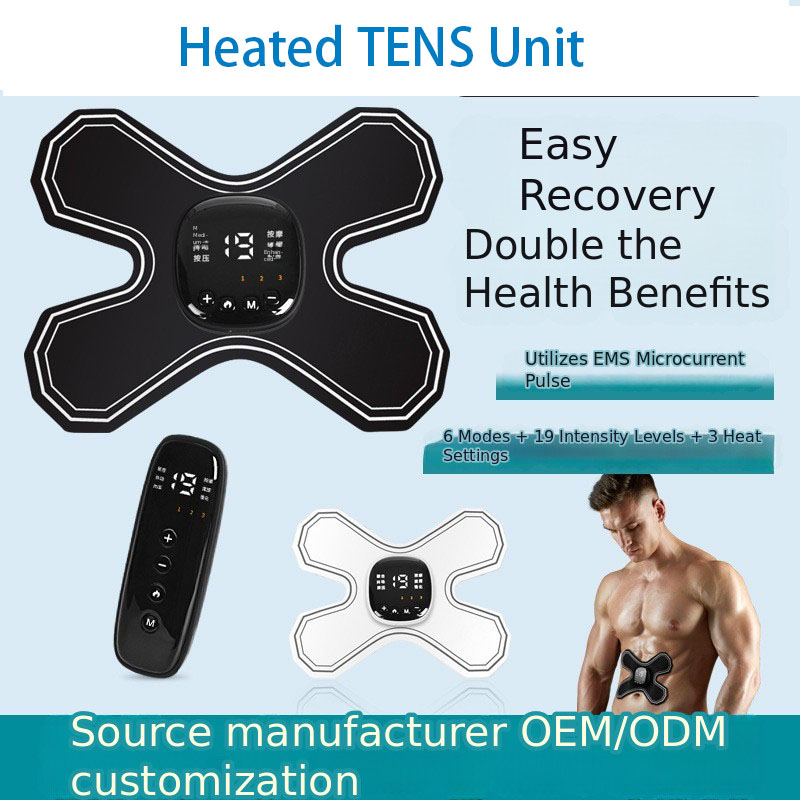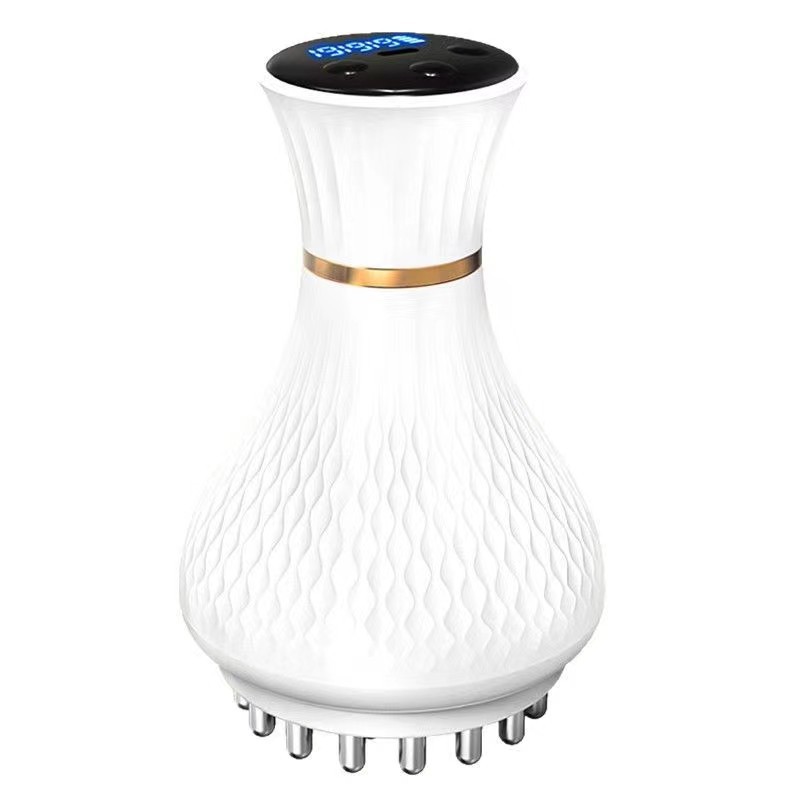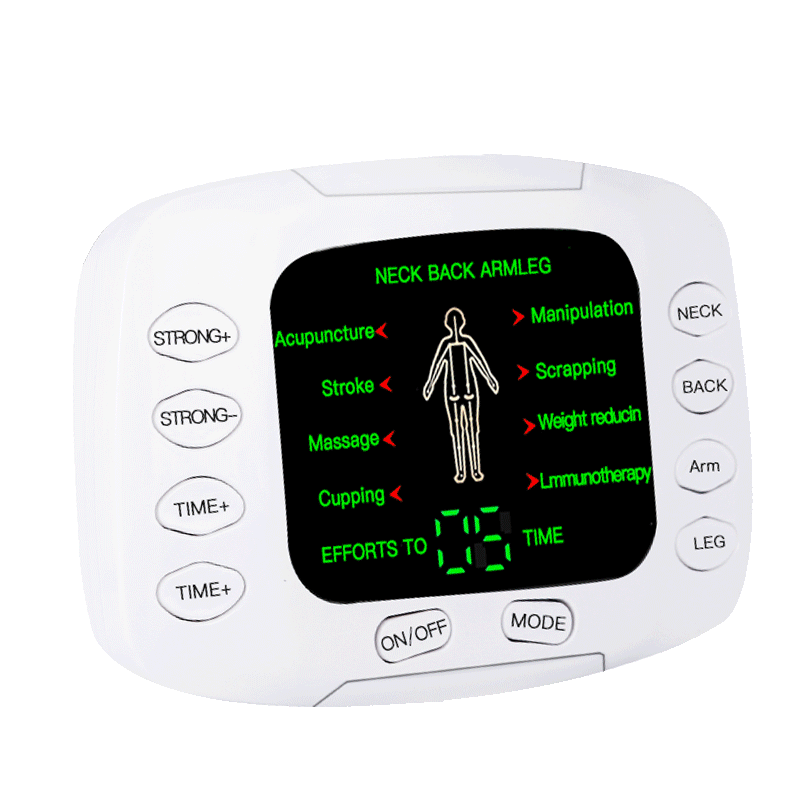What are the benefits of a Heating Pulse Massage Patch?
Dealing with sore muscles and stiff joints is frustrating. Standard heat pads are bulky, and TENS units alone can feel a bit clinical and cold. A better solution is needed.
The main benefit of a heating pulse massage patch is its two-in-one therapy. The gentle heat improves blood flow to relax stiff muscles, while the electrical pulses (TENS) block pain signals and provide soothing relief in one sleek device.
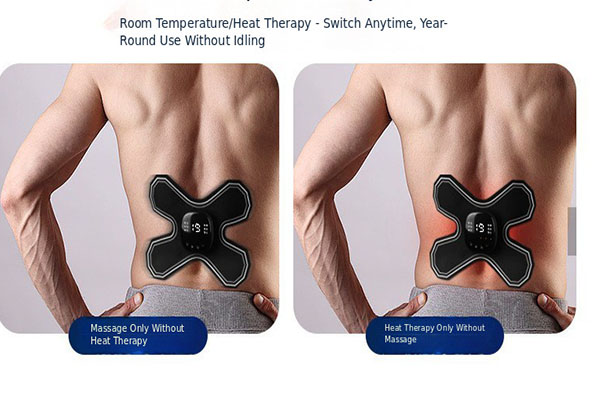
Throughout my career in the personal care electronics industry, I've seen countless innovations. Few are as practical and effective as the integration of heat and TENS technology. For my B2B partners, from fitness club managers to home healthcare distributors, this combination solves multiple customer problems with a single product. It simplifies recovery and pain management, but it's crucial to understand how to use it safely and to its full potential.
Can you use a heating pad and a TENS unit at the same time?
You want the most pain relief possible, so combining heat and TENS seems smart. But using separate devices together can be unexpectedly dangerous, leading to skin damage instead of soothing comfort.
No, you must never use a separate, standard heating pad and a TENS unit on the same area at the same time. The heat reduces skin sensation, creating a serious risk of electrical burns from the TENS current without you feeling it.
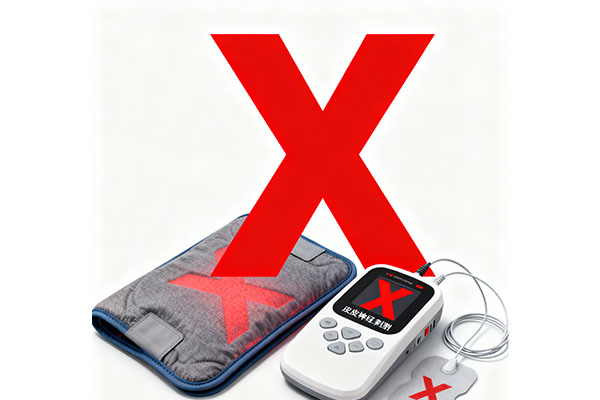
This is the single most important safety rule I emphasize to every distributor and retail partner. Combining separate devices is a major liability risk. Here's why: heat increases blood flow and opens pores, which lowers your skin's natural electrical resistance. This allows more current from the TENS unit to pass into your body. At the same time, the heat numbs your sensory nerve endings, making it hard to judge if the TENS intensity is too high. It's a dangerous combination that can easily cause a skin burn. An integrated heating pulse massage patch is specifically engineered to avoid this. The heat and electrical output are carefully calibrated to work together safely, which is a massive selling point that ensures user safety and confidence in the product.
Should you use heat before or after TENS?
You have a TENS unit but want to make it even more effective. Applying heat in the right order can be the difference between a mediocre session and truly profound relief.
For the best results, you should always use heat for about 5 to 15 minutes before you start your TENS session. This pre-treatment relaxes the muscles and prepares the skin, enhancing the effectiveness and comfort of the electrical pulses.
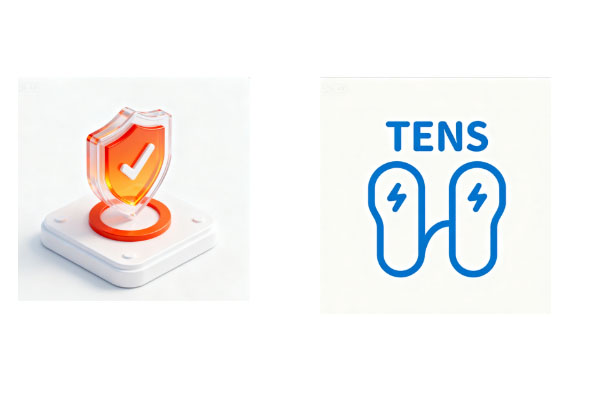
I always advise my wellness center clients to think of it as a warm-up. Applying heat first accomplishes two key things. First, it loosens and relaxes the tight muscles and soft tissues in the target area, making them far more receptive to the therapy that follows. Stiff muscles are resistant muscles. Second, the warmth gently lowers the skin's electrical resistance. This allows a smoother, more comfortable delivery of the TENS current, meaning you can achieve the desired pain-blocking effect without having to crank the intensity up to an uncomfortable level. After the brief heat session, a 15 to 20-minute TENS treatment is ideal. The two therapies work in synergy, creating a result that is far better than what either could achieve on its own. It’s a simple change that dramatically improves the user experience.
How to use TENS for knee pain?
That nagging knee pain can stop you from enjoying daily activities. You know a TENS unit can help, but if you put the pads in the wrong spot, you get zero relief.
To use TENS for knee pain, place the electrode pads on the soft tissue around the point of pain. Never place them directly on the bony part of your kneecap. A common technique is to "surround" the pain.

As a manufacturer, providing crystal-clear instructions is essential for customer success and safety. For something like knee pain, pad placement makes all the difference. You are trying to interrupt the nerve signals traveling to the brain, so you need to place the pads along that pathway.
Effective Knee Placement Methods
| Placement Style | How to Do It |
|---|---|
| Surrounding | Place one pad above and one below the painful area. |
| Bracketing | Place one pad on each side of the painful area. |
| Crossing | For general knee pain, place pads diagonally across the joint. |
Always start the device on the lowest intensity setting and slowly increase it. You are aiming for a strong but comfortable tingling or buzzing feeling. If you feel any sharp, stinging pain, the intensity is too high. This is crucial information for home healthcare retailers to pass on to their customers to ensure effective and safe use.
Can I use the heating pulse massage patch after exercise?
You've just finished a tough workout and you can already feel the soreness setting in. Using a recovery tool at the wrong time, however, can actually do more harm than good.
Yes, you can and should use a heating pulse massage patch after exercise to relieve muscle soreness. Just be sure to wait about 30 minutes after your workout. For an acute injury like a sprain, however, use cold therapy first.
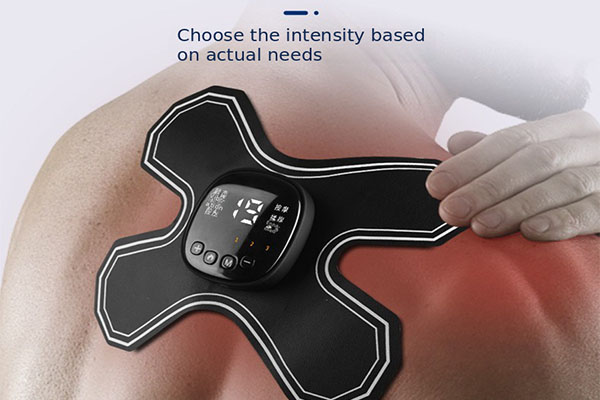
I work closely with procurement managers for fitness clubs, and this is a key topic. Post-workout recovery is a massive opportunity. For the typical muscle soreness that sets in after a workout (known as DOMS), this device is perfect. The heat boosts circulation, helping to flush out metabolic waste and bring fresh, oxygenated blood to the tired muscles. The TENS pulses then help to manage the immediate aches and pains. But it's vital to distinguish between general soreness and a new, acute injury. If you twist your ankle and it immediately swells up, a heating patch is the wrong choice. Heat will increase inflammation and swelling. In that case, you need cold therapy and compression for the first 24-48 hours. Once that acute swelling subsides, the heating pulse patch becomes an excellent tool to promote healing.
Conclusion
A heating pulse patch provides powerful, safe relief by combining heat and TENS. Use it correctly—before TENS, with proper placement, and at the right time after exercise—for optimal results.
